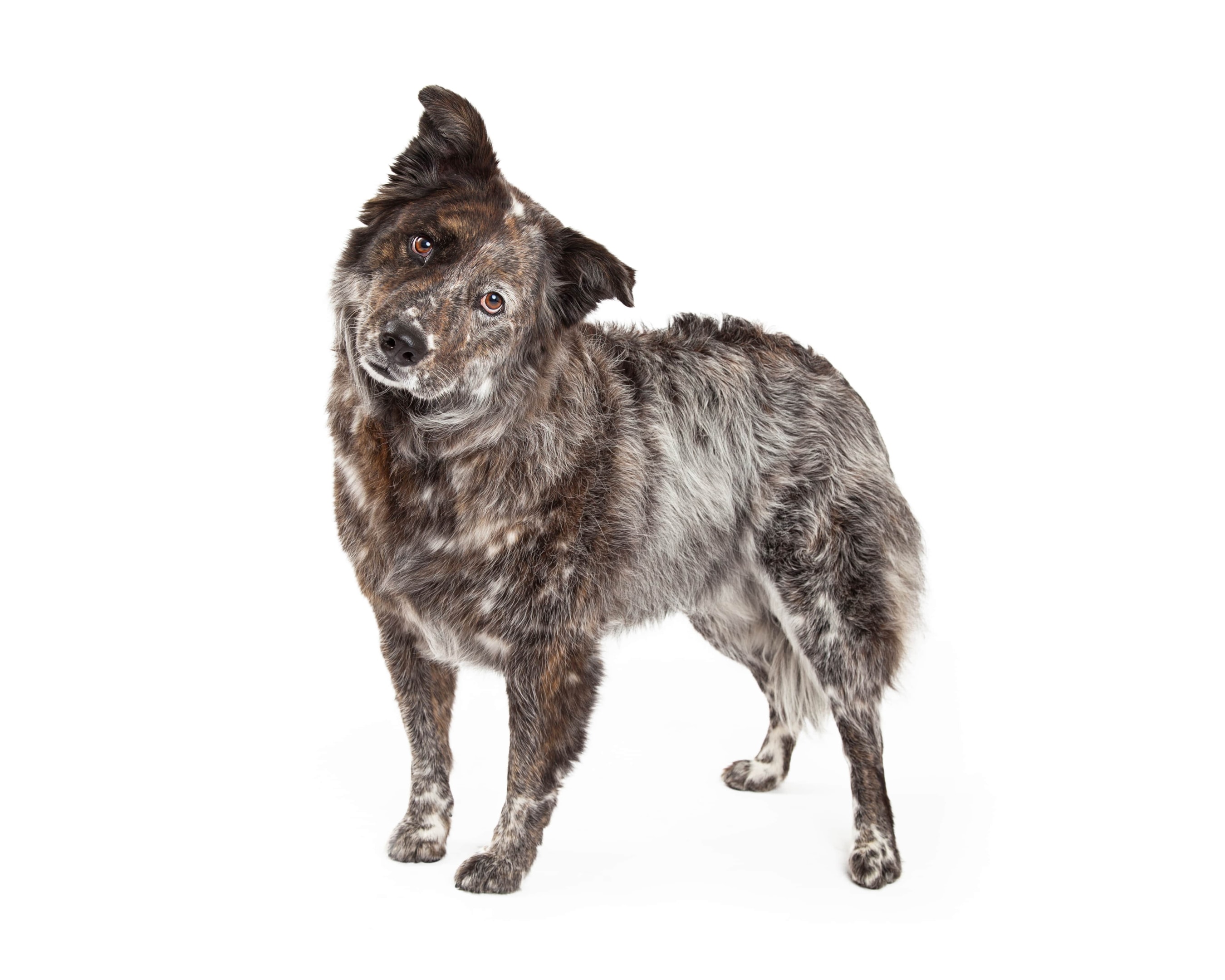Effective Cushing Disease in Dogs Treatment Options

Cushing’s disease in dogs treatment involves medications, natural supplements, and sometimes surgery. In this article, we will guide you through these options for Cushings Disease in Dogs Treatment, helping you make informed decisions for your pet’s health.
Key Takeaways
- Cushing’s disease in dogs is characterized by excessive cortisol production, primarily due to tumors on the pituitary or adrenal glands, requiring early detection for effective management.
- Treatment options for Cushing’s disease include medications (like Trilostane and Mitotane), natural holistic supplements like Lignans, and surgery for adrenal tumors, with a focus on ongoing veterinary care and monitoring.
- Dietary and lifestyle adjustments, such as a low-fat diet and regular exercise, are crucial in supporting dogs with Cushing’s disease and improving their quality of life.
Understanding Cushing’s Disease in Dogs
Cushing’s disease, also known as hyperadrenocorticism, is a serious condition characterized by the excessive production of cortisol, a hormone essential for various bodily functions. This disorder typically arises due to tumors located on either the pituitary or adrenal glands. The majority of cases involve a pituitary tumor near the pituitary gland, leading to what’s known as pituitary dependent Cushing’s disease.
There are two main types of Cushing’s disease in dogs: pituitary dependent Cushing’s disease and adrenal dependent Cushing’s disease. The pituitary gland, responsible for producing ACTH, can cause increased cortisol levels when tumors are present. In contrast, adrenal dependent Cushing’s disease is caused by tumors on the adrenal glands, which adrenal glands produce cortisol.
In dogs affected by Cushing’s disease, a faulty feedback mechanism causes an overproduction of cortisol. This hormonal imbalance can result in various uncomfortable and sometimes serious symptoms, making early recognition and treatment vital for managing the disease effectively.
Symptoms of Cushing’s Disease in Dogs

Identifying symptoms of Cushing’s disease early allows for timely diagnosis and effective management. Common symptoms include:
- excessive drinking and urination
- ravenous appetite
- hair loss
- muscle weakness
- panting
- skin problems
- a bloated belly
These dog’s symptoms can significantly impact a dog’s quality of life and are often mistaken for signs of aging or other conditions.
Dogs with Cushing’s disease often exhibit increased hunger, excessive thirst, and increased urination. Hair loss is another significant symptom, particularly along the sides, belly, and tail. In severe cases, fur may remain only on the head and feet, or present as a dull coat due to the slowed or stopped hair growth cycle.
The thinning of the skin due to elevated cortisol levels can lead to recurrent skin infections, adding to the discomfort. Early recognition of these symptoms enables timely intervention and treatment, aiding in effective management of Cushing’s disease.
Diagnosing Cushing’s Disease in Dogs
Diagnose Cushing’s disease starts with a thorough health evaluation and physical examination by a veterinarian, identifying clinical signs and determining appropriate diagnostic tests. Blood tests can measure cortisol levels and help confirm the diagnosis of Cushing’s disease.
Urine tests are also utilized to check cortisol levels, which can indicate the presence of Cushing’s disease. These tests, combined with blood tests, provide a comprehensive understanding of the dog’s hormonal balance and help pinpoint the issue. Additionally, imaging techniques such as MRI and abdominal ultrasound are employed to identify any tumors affecting the adrenal or pituitary glands.
Accurate diagnosis is vital for developing an effective treatment plan. The diagnostic process may involve multiple tests and follow-up evaluations to ensure the most accurate and comprehensive understanding of the dog’s condition.
Treatment Options for Cushing’s Disease in Dogs

Surgery. In the case of tumors, surgery has been very effective in humans, but is not advisable in dogs. With Cushings in dogs, the majority of tumors are located on the pituitary glands and it’s not recommended to perform surgery on these tumors at all. Surgery may be performed on adrenal gland tumors, but even then it is rare because of the high risk and high cost.
Chemotherapy. Historical Cushing’s Disease treatments for dogs include medicine such as Lysodren and Trilostane, which can be extreme since they are chemotherapy drugs. Lysodren actually destroys the outer cortex of the adrenal glands. The goal with Lysodren is to damage the adrenal cortex just enough to slow down the production of glucocorticoid hormones. If too much is given, the adrenal gland can be permanently damaged and the drugs can quickly cause the opposite of Cushings—Addison’s Disease, in which no cortisol is produced. If Addison’s disease occurs, another set of drugs will be required for the rest of the dog’s life. Addisons only occurs in about 5% of Lysodren patients. More frequently (in about 1/3 of Lysodren patients), the dog will overreact to the Lysodren by producing extremely low levels of cortisol, causing loss of appetite, vomiting, diarrhea, muscle weakness or even death. Death occurs from Lysodren in about 1% of Cushing’s disease cases.
Ketoconazole. This is an antifungal that can treat certain symptoms of Cushings in dogs. It is deemed by many veterinarians to be a safer method of treatment than Lysodren; however, it is very expensive and has no effect at all in 20% of cases.
New Holistic Treatment for Cushing’s Disease. A report published by Dr. Jack Oliver DVM, PhD, from the college of veterinary medicine at a major US University recommends flaxseed lignans and melatonin as Cushings Disease treatment for dogs. Many veterinarians recommend starting with lignans before starting a medicinal treatment, but this UofT report says it is okay to take Flax seed lignans if your dog is already taking Trilostane or Lysodren. Flaxseed lignans are also recommended because they cannot cause Addison’s disease. Although vets often disagree on treatment programs, there can be multiple options that are effective. Some vets have recommended HMR lignans- which is short for hydroxymatairesinol -from the Norwegian Spruce tree, and other vets have recommended flaxseed lignans, which contain both HMR lignans, SDG lignans, and several other types of lignans. All lignans produce the desired effect of increasing enterolactone and enterodial in the body and ultimately reducing cortisol levels, but the flaxseed lignans have more antioxidants, as well as fiber, compared to HMR lignans. Click here to view all of Dr. Oliver’s treatment option considerations. According to an excerpt from Dr. Oliver’s report, “Lignan has phytoestrogenic activity, and competes with estradiol for tissue estrogen receptors, with less biological effect. Lignan also inhibits aromatase enzyme (lowers estradiol) and 3- beta HSD enzyme (lowers cortisol). Use either FLAX HULL (SDG) lignan, or HMR lignan. DO NOT USE flax seed oil as the lignan content is very low, and the flax oil can increase triglycerides. Lignans are safe, so doses don’t have to be exact. Suggested Doses: SDG lignan; one milligram/lb B. Wt./day. HMR lignan; 10-40 mg/day for small to large dogs.” He also went on to reference that, “Melatonin plus phytoestrogens (such as those from Flax seed lignans) are known to inhibit 3-beta hydroxysteroid dehydrogenase. Lignans and genistein are also known to decrease the activity of aromatase enzymes in MCF-7 cells in vitro.** Therefore, combinations of melatonin and phytoestrogens may have efficacy in treating hyperestrinism conditions.” Phytoestrogens are prevalent in Lignans. Click here for the complete study
Monitoring and Managing Side Effects
Monitoring and managing side effects are crucial components of treating Cushing’s disease in dogs. Long-term success relies on consistent medication and regular veterinary check-ups to monitor treatment efficacy and side effects. Monitoring should occur every three months for life when using medications like Trilostane.
Regular veterinary check-ups are essential for dogs on medication for Cushing’s disease to ensure the treatment is working effectively and to adjust dosages as needed. Routine blood tests and clinical signs must be carefully monitored to control the excessive production of cortisol in dogs with Cushing’s disease. This ongoing monitoring helps prevent complications such as overtreatment and disease progression.
Pet owners play a key role in monitoring and identifying adverse reactions to medications. If there is a change in a dog’s symptoms while on medication, it’s important to contact the vet for possible medication dosage adjustment. Routine blood tests and periodic dose adjustments are essential for medicated dogs.
Diet and Lifestyle Adjustments for Dogs with Cushing’s Disease

Diet and lifestyle changes are crucial for supporting dogs with Cushing’s disease. A low-fat and low-carbohydrate diet is typically recommended to help manage symptoms and support overall health. Lean proteins, such as skinless chicken and fish, are particularly beneficial for maintaining muscle mass and providing necessary nutrients.
Regular exercise and maintaining a healthy weight, alongside dietary changes, can improve the quality of life for dogs with Cushing’s disease. These adjustments help manage the symptoms and support the overall health and well-being of affected dogs.
Prognosis and Long-term Outlook
The prognosis for dogs with Cushing’s disease depends on the type and severity of the condition. Dogs with pituitary tumors can experience a normal lifespan if the condition is managed effectively. The expected lifespan of dogs following a Cushing’s disease diagnosis ranges from one to five years, emphasizing the importance of early detection and regular care.
Successful treatment of Cushing’s disease often results in few medication side effects, allowing for a better quality of life. However, health complications from Cushing’s disease include a higher likelihood of kidney damage, diabetes, blood clots, and high blood pressure. Malignant adrenal tumors generally result in a less favorable prognosis compared to a benign or malignant tumor.
Successful management of Cushing’s disease requires lifelong treatment, careful monitoring with blood tests, and adherence to the veterinarian’s plan. Without proper monitoring and follow-up, pets can suffer from relapses, leading to severe illness or even death.
Summary
Cushing’s disease in dogs is a complex and challenging condition, but with the right knowledge and approach, it can be managed effectively. Understanding the disease, recognizing the symptoms, and pursuing appropriate treatment options are crucial steps in ensuring the best possible care for your dog. Regular monitoring and lifestyle adjustments play a vital role in maintaining your dog’s health and quality of life.
Natural holistic treatments, such as lignans, offer promising support for dogs with Cushing’s. Lignans, derived from plant sources like flaxseed, may help lower cortisol levels, a key factor in managing this condition. Consider incorporating lignans into your dog’s care regimen as a natural, supportive approach. Always consult with your veterinarian to determine the best course of action for your pet’s specific needs. By staying informed, proactive, and open to holistic options like lignans, you can navigate the challenges of Cushing’s disease and provide your dog with a comfortable and fulfilling life.
Frequently Asked Questions
What is Cushing’s disease in dogs?
Cushing’s disease in dogs is a hormonal disorder characterized by the overproduction of corticosteroids, particularly cortisol, which results in a range of distressing symptoms. Prompt veterinary consultation is essential for diagnosis and management.
What are the common symptoms of Cushing’s disease in dogs?
Common symptoms of Cushing’s disease in dogs include excessive drinking and urination, increased appetite, hair loss, muscle weakness, and a bloated abdomen. If you notice these signs in your pet, it’s important to consult a veterinarian for diagnosis and treatment.
How is Cushing’s disease in dogs diagnosed?
Cushing’s disease in dogs is diagnosed through a comprehensive health evaluation, blood and urine tests to assess cortisol levels, and imaging techniques like MRI or ultrasound to detect potential tumors. This multi-faceted approach ensures an accurate diagnosis.
What are the treatment options for Cushing’s disease in dogs?
The primary treatment options for Cushing’s disease in dogs include medications to manage symptoms, holistic supplements, and, although less frequently recommended, surgical intervention. It’s essential to consult with your veterinarian to determine the best approach for your dog’s specific situation.
What is the prognosis for dogs with Cushing’s disease?
The prognosis for dogs with Cushing’s disease can be positive, especially for those with pituitary tumors who are managed effectively, potentially leading to a normal lifespan. However, there are significant health risks such as kidney damage and diabetes that should be monitored.
Recent Posts
- What Are the Final Stages of Cushing’s Disease in Dogs?
- What Are the First Signs of Cushing’s Disease in Dogs?
- Cushing’s Disease in Dogs Life Expectancy, Elderly Care, Treatment Options, and Natural Support
- Joint Health in Dogs
- What To Do if Lignans Aren’t Working
Recent Comments
- Cushings in Dogs on What Are the Final Stages of Cushing’s Disease in Dogs?
- Bernard p Halloran on What Are the Final Stages of Cushing’s Disease in Dogs?
- What Are the Final Stages of Cushing’s Disease in Dogs? on Cushing’s Disease in Dogs Life Expectancy, Elderly Care, Treatment Options, and Natural Support
- www.xmc.pl on Cushing’s Disease in Dogs Life Expectancy, Elderly Care, Treatment Options, and Natural Support
- Issac W. Ewing on What Are the First Signs of Cushing’s Disease in Dogs?
